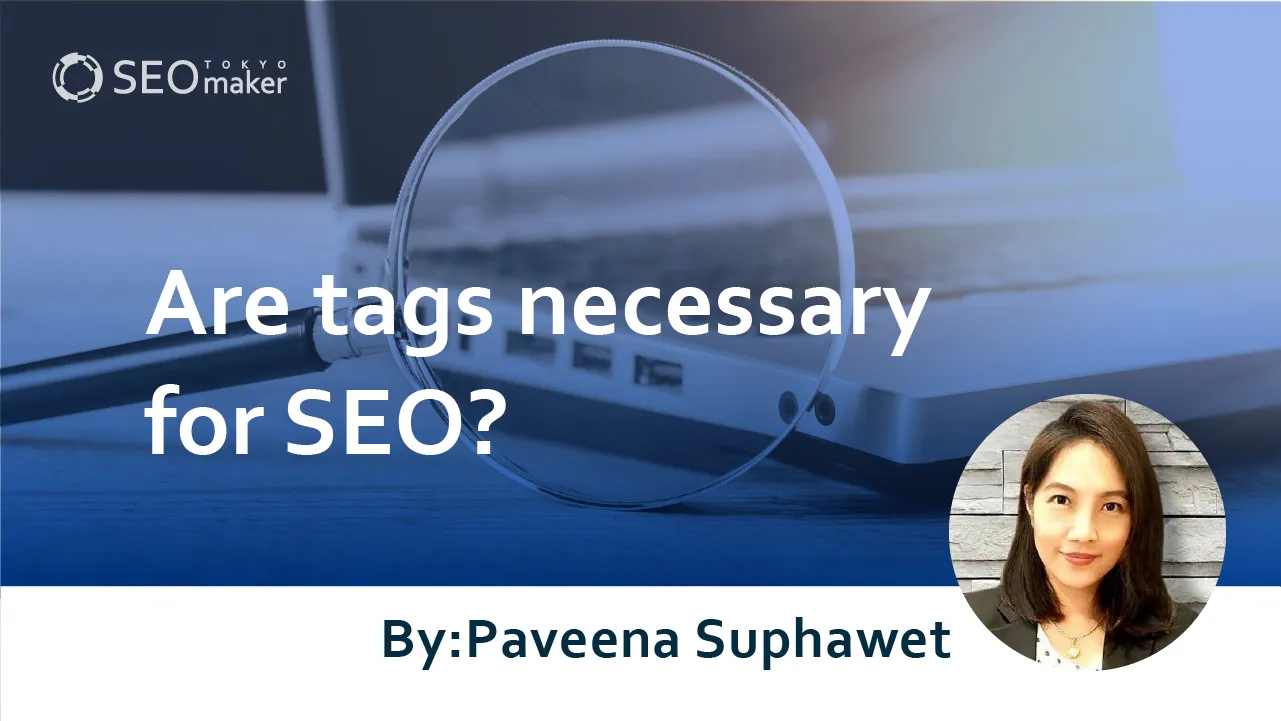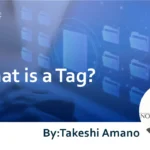Are tags necessary for SEO? : Explaining How to Use Tags Effectively
contents

There are various methods for SEO, but a fundamental one is the use of tags. Tagging is a simple strategy to implement, but due to its simplicity, many sites fail to do it correctly.
In this article, we will discuss the importance of tags in SEO and how to use them effectively. Don’t worry if you are not familiar with coding.
Tags in SEO
When you start with SEO, the discussion inevitably begins with “what about tags?”
Initially, what exactly are tags? Tags are command statements written within HTML files. It is these commands that browsers interpret to visualize and display web pages on the internet, making it possible for us to view pages online for the first time.
What is a Tag?
A tag is a “command statement” in HTML that tells the internet browser how to display a web page. Strings enclosed in <> are known as “command statements” or tags, and every website is composed of many such command statements. These tags are interpreted by browsers to display pages on the internet, making it possible for us to view pages online for the first time.
Types of Tags
There are countless tags, but there are three main types you should know for basic SEO.
- HTML tags
- Conversion tags
- Tool-specific control tags
HTML tags are necessary for displaying information about the page, text, images, and links. Conversion tags are used to track conversions like purchases, sign-ups, or document requests. Tool-specific control tags are embedded for tools such as Google Analytics, heat maps, and A/B testing tools.
In SEO, the term “tags” often refers to HTML tags, including title tags, meta tags, and header tags (h tags), and websites are built using a combination of these tags.
Search engines like Google interpret the HTML code to understand the content of web pages. Proper HTML coding is crucial for Google to appropriately recognize and evaluate content.
Why are Tags Necessary in SEO?
Search engine rankings are determined by Google’s algorithms, which utilize crawlers to evaluate pages. Thus, making pages recognizable as high-quality by these crawlers significantly affects their ranking in search results.
Google ranks pages based on how relevant the page information is to search keywords. Crawlers decode the HTML code to understand the content of the pages. Therefore, proper tagging is essential to help the crawler understand the content of the pages through keywords.
Optimizing HTML tags is indispensable for Google to correctly recognize and evaluate content. Tags are not complex; many are simple, and I will explain specific ways to use them effectively.
Check How to Use Powerful Tags for SEO
Optimizing essential HTML tags for SEO significantly impacts SEO. The three crucial tags that greatly influence SEO are as follows.
POINT
- Title tags
- Meta tags
- Header tags (h tags)
These tags help convey the site’s content clearly to both users and search engines. Below, I will explain how to use each of these tags effectively.
Title Tag
The title tag represents the title of a website. This title appears in browser tabs and in search result listings. Google’s crawlers also look at the title tag to determine search rankings, so it’s crucial to optimize it effectively.
Position Your Keywords in the First Half
By placing your target keywords in the first half of the title, Google’s crawlers can more easily determine what information the title contains, which makes it easier to gather data about the website. Additionally, since users typically read from left to right, having keywords at the beginning of the title quickly communicates the page content to users. This can increase click-through rates and, consequently, improve SEO performance.
Create Original Titles
Most web pages have unique content, so each page should have a distinct title that allows both search engines and users to instantly understand what the page is about. If page titles are duplicated or too similar across different pages, search engines struggle to grasp the content of each page.
It’s also important to ensure your titles don’t overlap with those of competitors. Creating original titles helps differentiate your site from others, potentially increasing click rates.
Keep It Around 30 Characters
Try to keep page titles to about 30 characters.
If a title is too long, it may be truncated in search displays, which can make it look incomplete and visually unappealing. While the number of characters displayed can vary by browser, a 30-character limit should communicate the page content effectively across different browsers on PCs.
On mobile devices, while you can typically display between 30 to 41 characters, the actual number visible varies significantly by browser, so aligning your title length more with PC standards (around 30 characters) is advisable to ensure it works well across devices.
Meta Tag
The meta tag is written inside the <head></head> section of HTML code and conveys settings and information about the web page.
One important meta tag is the meta description tag, which shows a brief description of the page underneath the title in search engine snippets.
Including Target Keywords
Like the title tag, you should also incorporate target keywords into the meta tags. In search results, keywords appear in bold, indicating to users that the content matches their needs.
Including target keywords in your meta description not only appeals to Google’s crawlers but also instantly communicates what your website is about to users.
Including these keywords also enhances the comprehensiveness of your keywords, which can help increase click-through rates.
Summarize Page Content Clearly
The meta description is a critical piece of text that can appeal to users about your website. It’s important to use phrases that pique users’ interest.
Avoid overly technical language or excessively long sentences without punctuation. It’s important to carefully summarize page content with unique descriptions for each page without repetition, keeping these points in mind.
Keep It Around 120 Characters
Like the title tag, the number of characters that can be displayed in the meta description varies depending on the browser and device.
For smartphones, it’s typically around 80 characters, and for PCs, about 120 characters. Therefore, it’s advisable to keep the meta description to around 120 characters. Consider putting the most engaging text in the first 80 characters to capture interest on mobile devices.
The length of your meta description can determine if it gets displayed in search results, so it’s crucial to count your characters carefully and hit these key points.
h Tags
An h tag is used to denote headings on a webpage. The smaller the number following the ‘h’, the larger and more important the heading.
Include Target Keywords in the h1 Tag
The h1 tag generally covers the title of an article and is used for setting the ‘most important headline.’ It should be used only once per page.
Unless you have a specific preference, it can be the same as the title tag. It’s essential to include target keywords just as you would in the title tag.
Maintaining Hierarchical Structure of h Tags
h Tags are organized hierarchically from h1 to h6, representing different levels of importance, and should be used according to the content block on the page. It’s essential to maintain this hierarchy, such as using h1 through h3 tags in order. Placing an h1 tag under an h2, for example, or using an h1 for a subheading, disrupts the page structure and prevents search engines from correctly interpreting the page.
Adhering to this structure improves both usability for users and SEO by clarifying the order of content and preventing confusion for both users and crawlers.
Include Text Directly Under h Tags
Since h tags are intended for headings, not for the main text, having sections with just a heading tag and no text is viewed by crawlers as “an article with only headings and no content.” Therefore, always ensure to include text directly under h tags.
In some cases, h3 or h4 tags are used instead of bullet-point layouts, but this could potentially lower SEO effectiveness. It’s important to always place text under h tags.
Key Considerations When Using Tags
Now that we’ve discussed how to effectively use powerful tags for SEO, let’s look at some important considerations when applying tags.
- Avoid overusing keywords unnecessarily.
- Combine effective keywords.
- Maintain originality.
- Do not create multiple articles with similar tags.
- Avoid forcing too many keywords.
Avoid Overusing Keywords Unnecessarily
As mentioned earlier, while it’s necessary to include target keywords in tags, it’s also crucial not to overdo it.
Google checks for the naturalness and context of headings, so avoid stuffing headings or titles with keywords unnaturally. Aim for tags that are clear and easy to understand from both a user and search engine perspective. Adopting a user-first approach in tagging naturally leads to tags that are clear and easy to read.
Combining Effective Keywords
While it’s important to incorporate target keywords within your tags, combining them with suggested keywords and collocations can enhance SEO effectiveness even further.
“Suggestions” refer to keywords that are likely to be searched in conjunction with your specified keywords. “Collocations” are words that are strongly related to your keywords and appear frequently within your content.
By combining your target keywords with suggested keywords, you can comprehensively address SEO.
However, incorporating irrelevant keywords into your tags can prevent Google crawlers from accurately collecting information, so it’s crucial to carefully determine keywords that are likely to be relevant.
Focus on Originality
It’s crucial to ensure each tag is original, especially the title and meta tags, which are displayed in search results. These are areas where differentiation from competitors is most needed.
By using phrases that capture users’ interest, you can increase click-through rates and ultimately improve your site’s rating. Therefore, make a conscious effort to use tags that reflect originality.
Avoid Creating Multiple Articles with Similar Tags
While this is related to originality, even if pages within your site have similar content, they should each have unique tags.
Creating multiple articles with similar tags can lead Google to perceive them as duplicate content, which can lower page evaluations. Therefore, in addition to differentiating from competitors, it’s also important to ensure that no similar tags are used repeatedly within your site.
Summary
From the perspectives of search engines and click-through rates, tags are an important SEO strategy for improving search rankings. While you cannot manipulate Google’s algorithms or crawlers, you can control how your site’s pages are structured. That’s why it’s vital to rigorously apply proper tagging, an SEO fundamental, to create pages that are easily understandable by both Google and users.










![What is a Description? Explaining the Meaning, Writing Style, and Changing Word Count – [2023 Edition]](https://www.switchitmaker2.com/en/wp-content/uploads/2024/09/what-is-description.webp)










